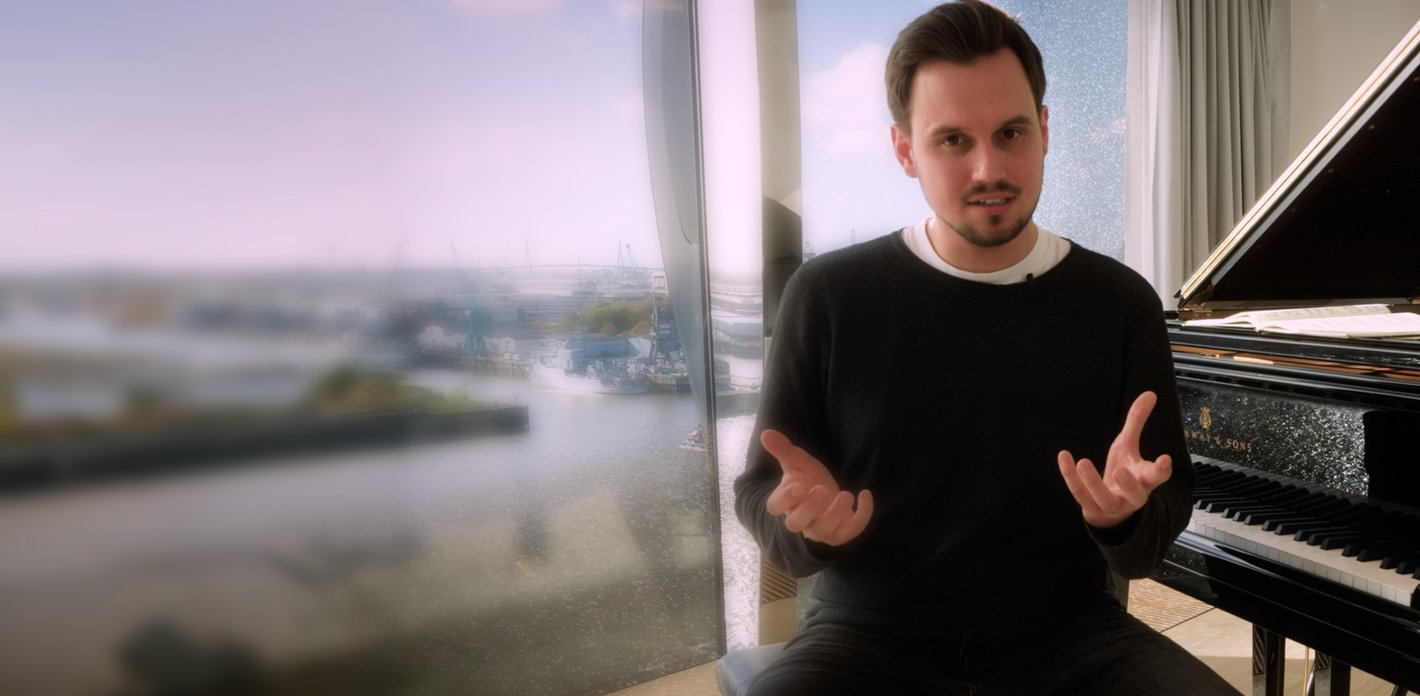The German composer Arnold Schönberg was convinced that his new discovery would shape at least 100 years of music history. And, as it turned out, he was right. His twelve-tone technique became one of the most influential compositional approaches of the 20th century. The basic idea was to break free from the limitations of harmonic order and use all twelve available notes of an octave – ensuring that all twelve notes are always played before a note can be repeated.
It may seem overly intellectual, but Schönberg was actually interested in a desire for new, broader expressive possibilities. »He felt that while music had grown increasingly complex and multifaceted over the centuries, expression still remained in a kind of prison, confined by tonality,« explains composer and arranger Henning Wölk, a lecturer at the University of the Arts and the Hanns Eisler Academy of Music in Berlin, among other institutions. In the »Elbphilharmonie Explains« video, Wölk demonstrates the core principles of Schönberg’s twelve-tone technique on the piano, showcasing its rich motivic potential.
Of course, you don’t need to analyse the twelve-tone lines in the music – »You can engage with it directly,« says Wölk. »This music isn’t intended to be mathematical; rather, it is deeply emotional and expressive.«






